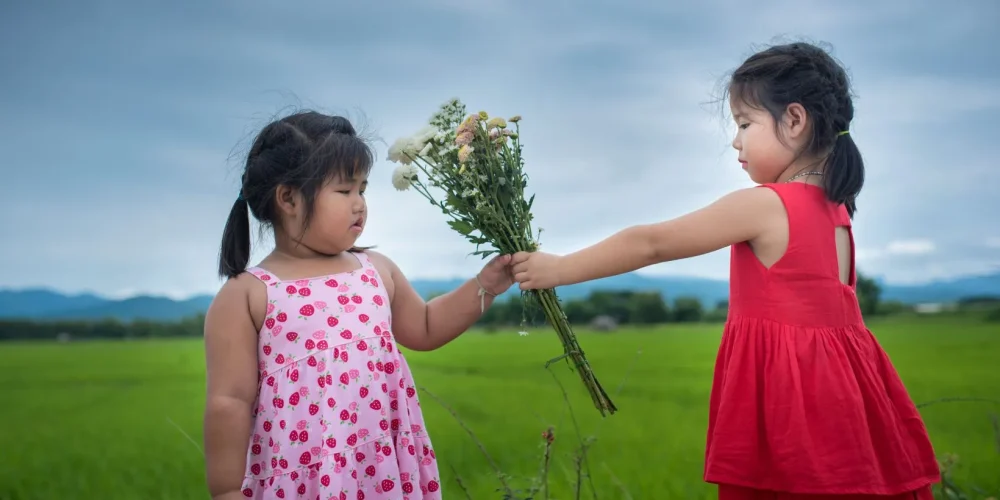How To Say Younger Sister In Korean
If you’re interested in learning how to say “younger sister” in Korean, I’ve got you covered! In the Korean language, the term for younger sister is “여동생” (yeo-dong-saeng). This word consists of three syllables: “여” (yeo) which means “female,” “동” (dong) which means “same,” and “생” (saeng) which means “birth.” Together, they form the word for younger sister.
To pronounce “여동생” correctly, break it down into syllables and emphasize the second syllable. Start with a soft ‘y’ sound for “여,” followed by a short ‘o’ sound for “동,” and end with a slightly prolonged ‘a’ sound for “생.” Remember that pronunciation can vary depending on regional accents, so don’t worry too much about achieving perfection.
It’s worth noting that in Korean culture, addressing family members often involves using specific terms based on age and gender. If you’re referring to your own younger sister when speaking in Korean, you would generally use the term “동생” (dong-saeng), which is more informal and affectionate. However, if you’re talking about someone else’s younger sister or using a polite form of speech, then using the term “여동생” (yeo-dong-saeng) would be more appropriate.
Now that you know how to say younger sister in Korean, you’ll be able to communicate this familial relationship with ease. Practice pronouncing the word and remember its cultural context when addressing different individuals. Happy learning!

Understanding Korean Family Terminology
In Korean culture, family holds great importance and is an integral part of everyday life. Learning the correct terms to address family members can help you navigate conversations and show respect towards others. Let’s explore how to say “younger sister” in Korean.
- Family Hierarchy: Korean family terminology reflects the hierarchical structure within the family. It’s important to understand this hierarchy to use the appropriate terms for different relatives.
- Younger Sister: To refer to a younger sister in Korean, you would use the term “여동생” (yeo-dong-saeng). This term is commonly used by both males and females when addressing their younger sisters.
- Other Family Terms: Here are a few other commonly used family terms in Korean:
- Elder Brother: “형” (hyeong)
- Younger Brother: “남동생” (nam-dong-saeng)
- Older Sister: “누나” (noona)
- Father: “아버지” (abeoji)
- Mother: “어머니” (eomeoni)
- Respectful Language: In formal or polite situations, it is customary to add honorifics when addressing older family members. For example, instead of calling your older sister just “누나” (noona), you may address her as “언니님” (eonni-nim) which adds a level of respect.
- Context Matters: It’s important to consider the context when using these terms. In casual settings among close friends or siblings, individuals may use more informal language or even nicknames that vary from person to person.
Remember, learning a language involves understanding its cultural nuances as well. Using the proper terminology shows respect and helps build stronger connections with native speakers. So, the next time you need to refer to your younger sister in Korean, remember to use the term “여동생” (yeo-dong-saeng).
Exploring the Word for Younger Sister in Korean
When it comes to the Korean language, understanding how to address family members is an essential part of communication. If you’re looking to express the term “younger sister” in Korean, let’s delve into the intricacies and discover the appropriate word.
In Korean, the word for younger sister is “여동생” (yeo-dong-saeng). The term 여 (yeo) means “female,” while 동생 (dong-saeng) refers specifically to a younger sibling. By combining these two words, we get the direct translation of “younger sister.”
It’s important to note that addressing family members in Korean involves using different terms depending on whether you are older or younger than them. In this case, if you are referring to your own younger sister, you would use “내 여동생” (nae yeo-dong-saeng), which translates to “my younger sister.” However, if you want to refer to someone else’s younger sister, simply using “여동생” will suffice.
Korean culture places great emphasis on respect and hierarchy within families. Therefore, it is common for individuals to address their older siblings with specific titles as well. For instance:
- Older Brother: “형” (hyeong)
- Older Sister: “누나” (noona)
These terms are used when speaking directly or referring respectfully to older siblings.





